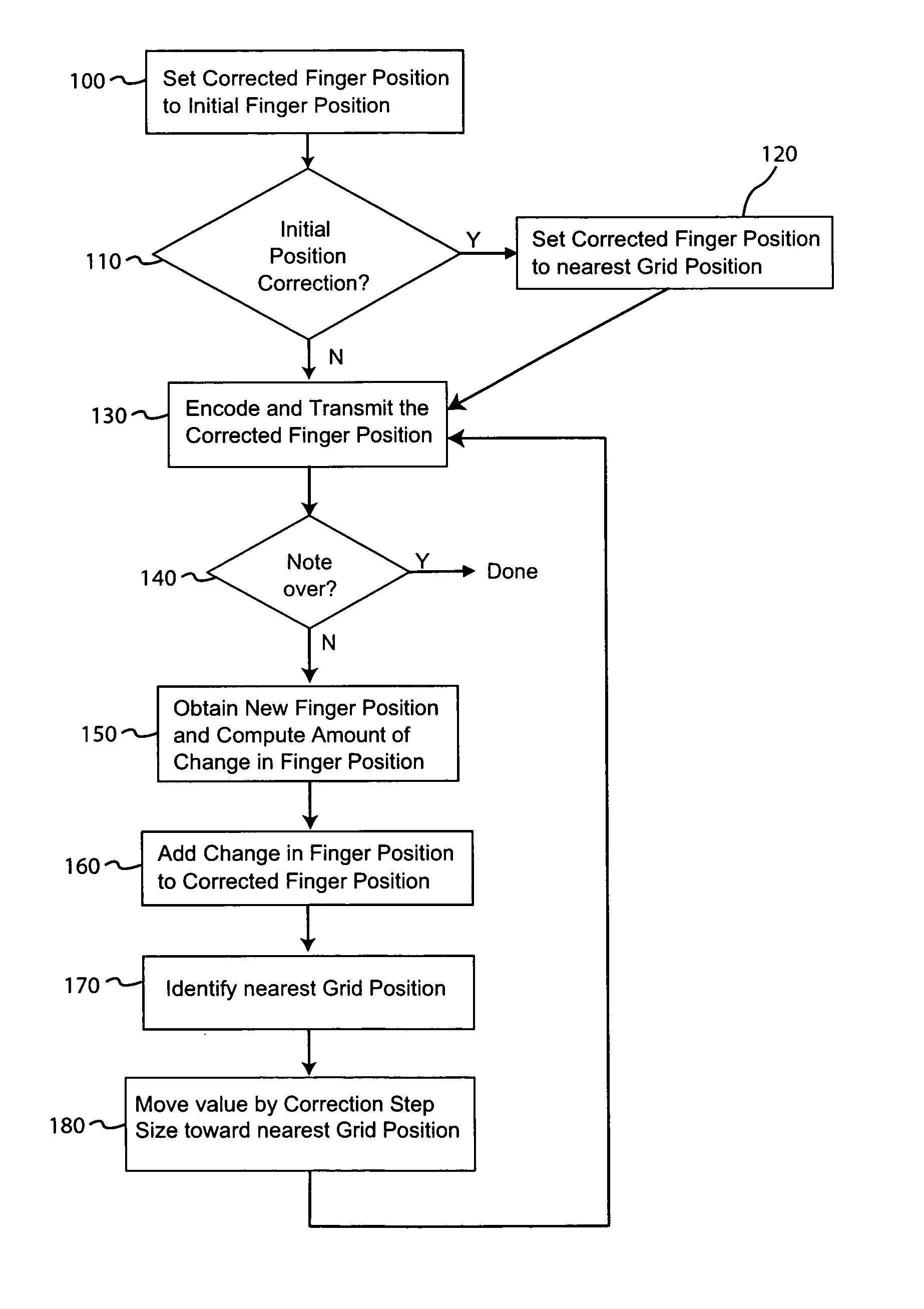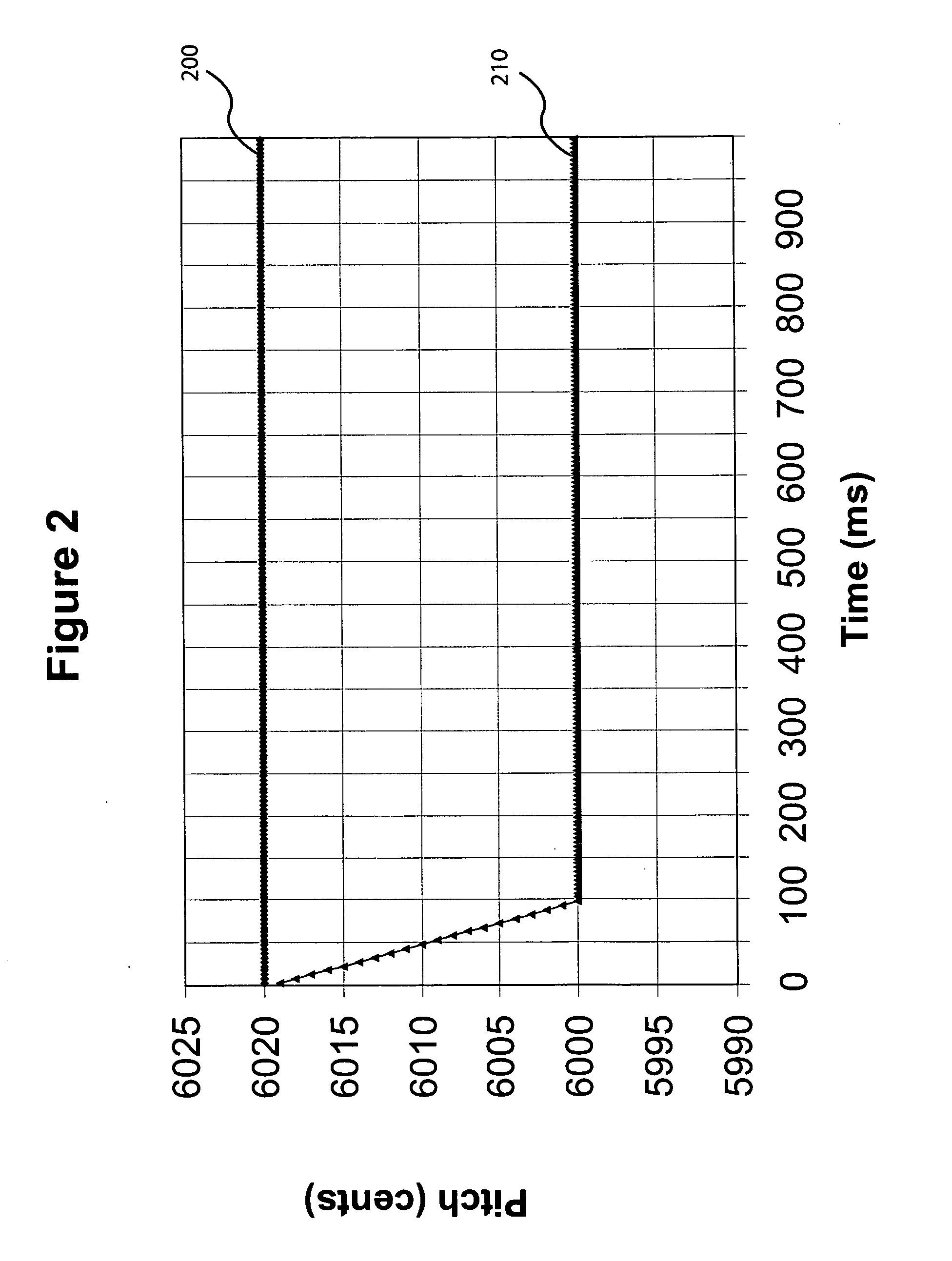Position correction for an electronic musical instrument
a technology for electronic musical instruments and corrections, applied in the field of electronic music controllers, can solve the problems of added difficulties, technical challenges, and devices using such a method are not able to perform vibrato, smooth glissandi, or any other small variation in pitch, so as to achieve small corrections, slow progression to correct pitch, and larger corrections
- Summary
- Abstract
- Description
- Claims
- Application Information
AI Technical Summary
Benefits of technology
Problems solved by technology
Method used
Image
Examples
Embodiment Construction
[0031] As shown in FIG. 1, a method of finger position correction is depicted. For ease of explanation, the method shows an iterative correction of a single finger position. In polyphonic operation, multiple instances of this method are evaluated to process multiple finger positions. In step 100, the corrected finger position is set to the musician's actual initial finger position on a playing surface. In step 110, the system will check if initial position correction is desired. If initial position correction is not desired, the method proceeds to step 130. If it is desired, the system will set the corrected finger position to the nearest grid position in the currently selected grid in step 120.
[0032] In a typical embodiment, an equal-tempered twelve half-step tuning is utilized. In this regard, the grid may be set to multiples of 100 cents. A cents value of 6000 corresponds to a musical pitch middle C, a cents value of 6100 is a middle C sharp, and so on. Alternatively, any concei...
PUM
 Login to View More
Login to View More Abstract
Description
Claims
Application Information
 Login to View More
Login to View More - R&D
- Intellectual Property
- Life Sciences
- Materials
- Tech Scout
- Unparalleled Data Quality
- Higher Quality Content
- 60% Fewer Hallucinations
Browse by: Latest US Patents, China's latest patents, Technical Efficacy Thesaurus, Application Domain, Technology Topic, Popular Technical Reports.
© 2025 PatSnap. All rights reserved.Legal|Privacy policy|Modern Slavery Act Transparency Statement|Sitemap|About US| Contact US: help@patsnap.com



